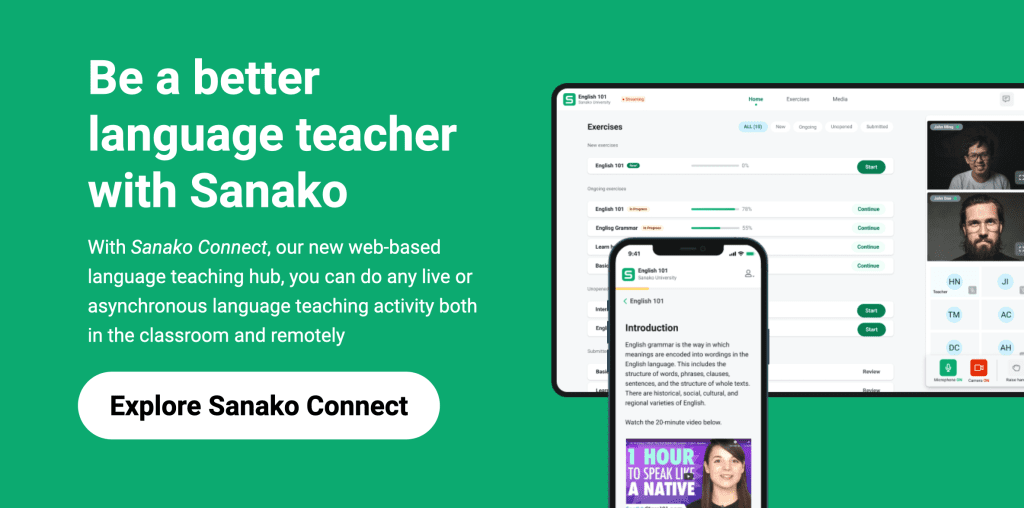One of the characteristics of a great teacher is their ability to ask brilliant questions. This includes those questions that form part of their lesson content but also those which might, to an untrained ear, seem simple and straight-forward. These questions help teachers to generate interest in the course, encourage students’ to think in new ways, to overcome their nerves and speak publically, as well as ensuring that everyone understands and is fully engaged.
Great teachers have also learnt that some questions are just not as effective as they might first appear. As Declan Cooley suggested in a blog post for the British Council, a “Yes” answer to the question “Do you understand?” can mean the learner:
- understands correctly and completely
- thinks he or she completely understands (but doesn’t)
- partly understands (but which part?)
- understands just the last thing.
So how can language educators learn to ask better questions? The secret lies in becoming an expert in display questions. These are so named because the questioner knows the answer and the person being asked knows that the questioner knows the answer.
This blog post will explore two different types of display questions in detail. We’ll be looking at how concept checking questions (CCQs) and instruction checking questions (ICQs) could transform your questioning technique and engage your learners on a new level.
Check out also our instructional video on this topic below or on our Youtube channel.

What are CCQs?
A concept checking question (CCQ) is a question used by language teachers to check students’ understanding of a specific concept or topic. Using a CCQ aims to ensure that all students have fully understood the key ideas, vocabulary or grammar structures being taught.
CCQs are therefore typically designed to be concise and focused, targeting only the core elements of the concept being taught. They are often closed questions that require a simple “yes” or “no” answer or a brief response. CCQs can also be open-ended, enabling students to provide more detailed explanations or examples that demonstrate their understanding.
If educators do not get the anticipated response, then it is easy to see if / where further clarification and instruction may be needed. The use of CCQs is therefore particularly important after presenting new material and just before students start producing language using the new content. They can also be powerful when used at the end of each lesson / topic as a quick review.
Here’s a simple example of a concept checking question being used in a common language teaching scenario:
Target sentence: “Look! The boys are swimming in the sea.”
Potential CCQs and expected responses:
- Are they swimming now? Yes
- Have the boys finished swimming? No
- Can you see them? Yes
- Is this happening in the past, present or future? The present
In summary, CCQs serve as effective tools for assessing student comprehension, promoting active learning, and guiding instructional decisions.
What are ICQS?
On the other hand, an instruction checking question (ICQ) is a question used to verify whether students understand and can follow instructions or tasks provided by the educator.
They are commonly used in language classrooms to ensure that students comprehend what is expected of them and can carry out the instructions correctly. If students are not clear then teachers can identify and address areas of confusion or misunderstanding, providing further clarification or guidance as required.
ICQs are typically short and focused and usually only require a brief response related to the given instruction. The expected response should clearly demonstrate comprehension of and an intention to adhere to the instructions provided.
Of course, it’s important to take the time to clearly express your instructions in the first place. But they do still need to be checked with your students – no matter how clear you think that you might have been. This is really important in second language classrooms, where students might not understand your instructions or have the language ability to formulate a question of their own in response.
Here’s a simple example of an instruction checking question being used in a common language teaching scenario:
Instruction: “For your homework, I want you to answer the reading comprehension questions that I have posted on Sanako Connect. They are in the folder called June 2023”
ICQ: “Where are the questions for your homework?”
Expected Response: “On Sanako Connect in the June 2023 folder.”
As above, gaps can be addressed if not all students have correctly understood the task’s requirements. Once everyone is clear on what they need to do, all students can begin the planned activity.
Using CCQs and ICQs in language teaching
CCQs and ICQs are commonly identified as valuable tools in language teaching as they promote active learning, help assess understanding and provide language educators with immediate feedback. Importantly, they also allow teachers to monitor comprehension and to adjust their own instruction to facilitate effective language learning.
We’ve identified six key ways in which they could be used in your language teaching:
- Checking comprehension of vocabulary and grammar: CCQs can be used to verify students’ understanding of new words or grammatical structures. For example, after teaching the meaning of a new word, why not ask a CCQ to check if students understand its meaning or can demonstrate how it is used in context?
- Assessing reading or listening comprehension: CCQs help educators to check students’ comprehension of a text or a listening exercise. Asking focused questions about the main ideas or specific details in the text or audio can help teachers gauge how well students have understood the material.
- Verifying understanding of instructions: ICQs are particularly useful when giving instructions for language activities or tasks. By asking ICQs, teachers can ensure that students understand what is expected of them and can carry out the instructions accurately. This helps prevent confusion and ensures that students are on the right track.
- Checking understanding of language functions: Think about using CCQs to assess students’ grasp of specific language functions or communicative purposes. For example, when teaching the use of the past tense for narrating events, ask CCQs to check if students understand when and how to apply the past tense in their own storytelling.
- Evaluating speaking or writing tasks: ICQs can be employed to assess students’ ability to produce language in speaking or writing tasks. For instance, before assigning a group discussion activity, ask a series of ICQs to verify if students understand the discussion topic, the time limit, and the expected outcome.
- Reinforcing and reviewing language concepts: Finally, CCQs and ICQs could be deployed as quick review activities throughout a lesson or at the end of a unit to consolidate students’ understanding of language concepts. By revisiting key points and checking comprehension, teachers can reinforce learning and address any lingering doubts or misconceptions.
We hope that this post has encouraged you to incorporate CCQs and ICQs into your language teaching. After all, they enhance student engagement, encourage active participation and provide invaluable opportunities for formative assessment. And if you’re able to deliver that on a regular basis, then you’re well on the way to becoming a great teacher!
Whatever language you teach and however you deliver your language lessons, Sanako’s market-leading tools are here to help. We’re constantly innovating and looking to use technology to enable language educators to teach languages more efficiently and more successfully. It’s why the world’s leading educational institutions choose Sanako as their preferred supplier to support online and in-person lesson delivery.
If you are interested in learning more about how Sanako products support language teachers and students and would like to see how they could benefit your institution, click here or the banner below to learn more!

